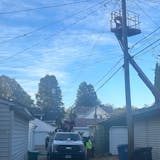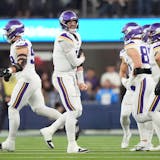John Noltner and his wife, Karen, sold their Bloomington home last fall, bought an RV and headed out to find an increasingly precious American resource: peace. Noltner, 54, moved to the Twin Cities from Wisconsin in 1992 and spent three decades as a freelance photographer for magazines, nonprofits and corporations. To counter a growing divisiveness he witnessed as he traveled, he launched "A Peace of My Mind," a multiyear, multimedia arts project sharing stories of the courage and kindness of everyday people. Below, he talks about his latest project, how he ended up on a shrimp boat and why he remains optimistic.
Q: You say that your newest book, "Portraits of Peace: Searching For Hope in a Divided America," is your story. Please say more about that.
A: In the first two books in my "A Peace of My Mind" series, which began in 2008, I shared the stories of others. After a decade of telling other people's stories, I realized I had something to say as well, something about taking risks, encountering differences, and being a better ally. So "Portraits of Peace" is my story, the back story of the wisdom and beauty of those I encountered, and the lessons I learned along the way.
Q: You've traveled 40,000 miles to pursue this project. How many months did that take?
A: The 40,000-mile journey took place over about three years; my wife, Karen, and I hit the road last fall to gather more stories for this ongoing series. There were about nine trips ranging from two weeks to five weeks. The project was self-funded, so we fit it in between paying projects. Sometimes I camped, stayed with friends, stayed with strangers, an occasional hotel. I spent one night on a shrimp boat in the Gulf of Mexico and another in a burnt out RV in a subject's backyard. I'm pretty low maintenance. And frugal.
Q: Was there a specific moment, or just more of a growing sense of sadness, that it was time to make this journey into a divided America?
A: I've had a growing awareness of the issues of division we face and an increasing desire to try to respond in some way through my storytelling and art. What started as a small personal project has grown and evolved as it demanded more of my time and as we have found new ways to use these stories to engage communities.
Q: How might you gauge "success" now that the journey is completed?


